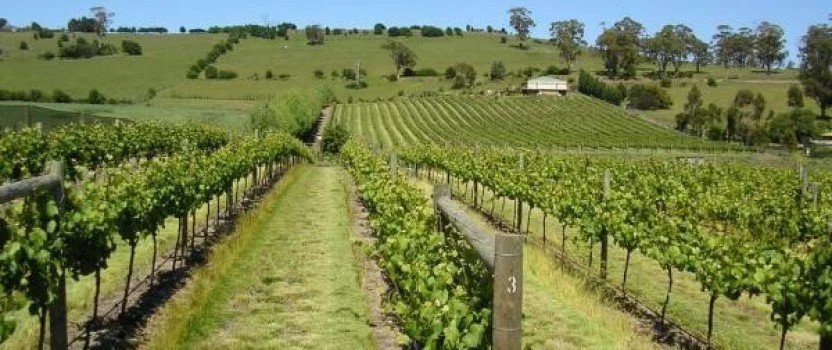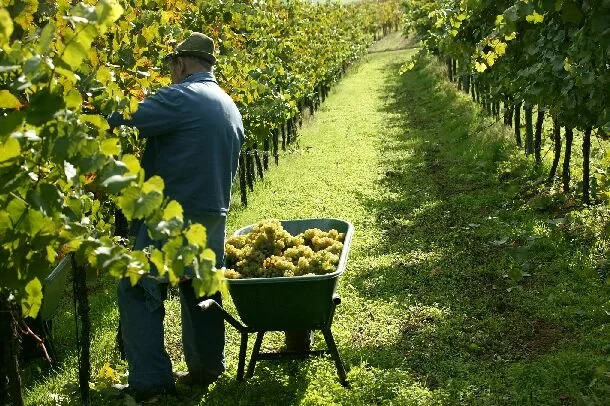New Wines For Old?
It’s the time of year when we select our wines for the coming year. Having breathed a sigh of relief that this year has showed further proof that event-goers have embraced our unbreakable full sized bottles of wine, we turn our thoughts to yet more innovation.
The European wine harvests are safely gathered in, the wines have seen their alcoholic and (largely) malolactic fermentation (this is a secondary fermentation where the more aggressive malic acid present post alcoholic fermentation, as in apples, are converted into milder lactic acid, such as in milk) completed. Now, it’s the turn of the blender to assess what colours he or she’s got to play with in the palette. It’s my favourite time of year!
I just love the challenge of trying to predict how wines that are still in tank can come together to make the perfect glass of wine in our unbreakable PET bottles: be that on the beach; at a festival; on a boat; or relaxing on the decking with friends and the newly- acquired pizza oven. There seems to be some alchemy at work when what first appears to be a virtually undrinkable and acidic tank of Sauvignon is blended with a percentage from one that’s more floral and approachable, resulting in a perfectly poised wine that is a delight with a goats’ cheese crostini!
However, it’s not all long lunches and patting each other on the back for discovering our wine of the vintage. The commercial aspect of what is done in the tasting room is critical, such as Event Wine Solutions has never experienced before. Some financial ‘sages’ say that Sterling has been over-valued against foreign currencies for some time, but the disappointing reality is that the result for our consumer is simply that prices will rise. The overwhelming volume of wine that’s consumed in the UK is imported, as are the bottles, capsules, cartons and labels. This means that much of the cost (apart from the £2.50 the Government takes in Excise Duty – yes, it really is 50% of your current bargain £4.99 bottle!) is traded at 18% more cost than this time last year.
Our search this buying season has been more challenging than ever before. Usually our deals are largely done well before December. Our wines are selected and costed for the year ahead, initial bottling dates booked and new labels commissioned. Not so this year. In order to find the very best value for our customers that demand the very best we can achieve, we are exploring new supply lines. One of these is an old friend of mine – Bulgaria.
I was last trading wines from Bulgaria 15 years ago, before the country’s accession to the EU. The post-Communist era brought much change and not all of it good. Yes, there were land restitution reforms, but many former land owners had long lost the will to farm, and fields were often left to do what nature does. So, with a certain sense of trepidation, I re-connected with my old friend, Dimiter Dragiev, to see if he’d agree to help me make an assessment of the current wine scene in his beautiful country. He readily agreed and set aside some time from his busy family winery to be my guide for an intensive whistle-stop tour.
I have alluded to the old days already. These were when there were precious few miles of motorway, the roads were clogged with decrepit lorries belching blue smoke, desperately trying to edge past mule carts loaded with maize. Ones where old redoubtable ladies doing manual work in fields made me ashamed of my back pain from just a couple of hours digging in the garden. You get the picture.
EU investment (okay, yes some of our money) has made a massive difference. There are vastly improved roads, good wifi and mobile phone signals (listen up BT, the coverage is better in this former so called ‘third country’ than anywhere miles around my Wiltshire home). But, would any of that money have found its way into one of the oldest wine industries in Europe (there is strong evidence that vines were planted here long before the Romans invaded, and Bulgaria is often called the ‘cradle of the wine trade’)? You betcha it has!
My initial impression of our first stop was that it could have been a bespoke winery built for a rock star as a fun tax dodge. There were beautifully crafted and very well planned winery buildings that replicated a traditional rural Bulgarian village, but were designed to get the very best from the grapes. The impressive gleam of stainless steel abounded at every turn. The most modern and, in some cases, edgy winemaking techniques are employed by enthusiastic and impeccably trained oenologists. There has always been an excellent wine industry university at Plovdiv, but many of the finest graduates these days hone their skills in the top wineries of Chile, Argentina, Bordeaux and Australia.
Then I was shown possibly the largest vineyard under one ownership I have ever seen. Petko Mateev, the owner, jokingly told me that I would see Tuscany in Eastern Europe. I soon discovered what he meant. As our Land Cruiser rounded the top of the hill, we turned and faced a sweeping view of vines as far as the eye could see, of many different varieties, the like of which had me salivating at the prospect of the tasting room!
EU investment had enabled the land to be restored to its former glory. No, MUCH better than that! This time around the vineyards are not being bled dry of grapes; yields are vastly reduced. There are sorting tables to eliminate by hand bunches that don’t come up to standard prior to the press, and whilst Organic is not practical for this sometimes rainy area north of the Balkan Mountains, there is far more respect paid to the soil than I remember from my time here at the turn of the century.
Yes, yes, but what about what goes onto the glass..?
Wow. I was already getting the impression that things had improved, but the transformation in the tasting room was something I couldn’t have prepared myself for. Glass after glass of tank samples were not just clean, correct and true representations of the grape variety, but REALLY exciting!
In the whites I found zingy, tight-knit Sauvignon, gently floral Riesling and Muscat (but with genuinely balanced acidity), charmingly delicate Pinot Gris (with hints of jasmine) and Chardonnay that I would have happily put up against the wines of southern Burgundy any day.
As for reds, well the revelation here was even more dramatic. I used to reject tank after tank, blend after blend, of thin, tannic wines, with fruit that had never had proper phenolic ripeness prior to picking (bulk volume was everything). It was tough bringing good wine to market back then. These reds were satin textured pussycats compared to those of the past. Great colour from each and every varietal, tannins sweet and controlled, with aromas that were enticing in every way.
There was Merlot with gently sweet bramble and Cabernet Franc (Bulgaria could easily be onto a great thing with this varietal) that had all the charm of the great reds of the Loire Valley, but a sweetness and intensity of dark cherry and plum that kept delivering blend after blend. Pinot Noir was well-judged and a mix of those that we all love from New Zealand, combined with a touch of the vegetal from Burgundy.
The Carmenere (yes, I DID say Carmenere!) was some of the best I have ever tasted at this level. No green bitterness that you sometimes get from South America was in evidence and the purity and ripeness were stunning. Cabernet Sauvignon, that traditionally fine varietal produced in the northern region of the Danube Plain was also much improved. We used to tip this into Claret jugs and bend the truth about its ‘Bordeaux’ origin back in the day, but now you’d be proud to have the label on the table (nice rhyme?!) next to a leg of Welsh lamb!
So, what to do with all these discoveries? Well, it may not be easy for Bulgaria to re-enter the wider UK market with its new generation wines, due to those who make the decisions about what we are presented on shelf sometimes having long memories, but the ‘hipster’ events business is no such slouch in embracing the contemporary. I have every confidence that the wines I intend to launch in 2017 will be not just welcomed by the industry for their value for money and profit opportunity, but that the consumer will enjoy some of the very best wines ever sold on site.
Bulgaria has its challenges, sure. It loses too much of its young graduate talent to other more developed countries, with many not returning but remaining overseas. It’s a small country (just 7 million), with most people living either in the capital, or in the Black Sea ports of Varna and Burgas. And I did smile as there was an enthusiastic round of applause for a successful landing at Sofia airport on my inbound flight (though it seemed pretty regulation to me!).
However, if there was an example of how the stronger can assist the weaker members of the EU (in the world of wine, at any rate), in order to improve lives and prospects, then this has to be it. I know to some it’s not fashionable to talk in this liberal manner right now, but just taste some of my Bulgarian wines in 2017. Surely, you’ll be generous enough to raise a glass to the (I hope) resurgence of my old friend, BULGARIA!





